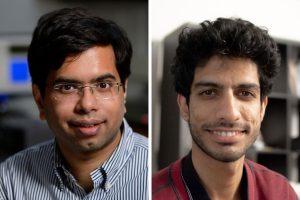
Ishan Barman and Saransh Arora of the Department of Mechanical Engineering have been named 2022 Oracle for Research Fellows.
Launched in May 2021, the Oracle Research Fellows Program recognizes potentially transformative research proposals from current and future research luminaries. Fellows receive $100,000, free Oracle Cloud credits to support their project, technical advice and collaboration, and support for sharing and promoting their work.
Barman is an associate professor of mechanical engineering with joint appointments in the Departments of Oncology and Radiology and Radiological Science. His research groups focuses on developing innovations in biophotonics, nanomaterials, and artificial intelligence to address unresolved questions in fundamental biology and applied clinical research.
Arora is a first-year doctoral student in the Barman Laboratory who works on the applications of deep learning in Quantitative Phase Imaging (QPI) for the phenotypic study of tumor cell heterogeneity.
With support from Oracle, Barman and Arora will work to create an AI platform for the detection of radiation resistance in cancer.
One thing underpins all organismal life: the cell. Cell morphology, the branch of biology dealing with the study of the form and structure of cells, represents the coupling between a cell’s biochemistry and its biophysics. The team aims to develop a new AI-powered quantitative phase imaging platform that offers automated and sensitive morphological recognition to provide a route for accurate, reproducible, and economical cancer diagnoses without the need for human interpretation.
The platform will harness the power of AI to actively recognize and exploit class-specific fingerprints encoded in cell morphology to predict radiation response in tumor cell populations. Furthermore, their work will pave the way for computationally multiplexed assays from inexpensive, label-free quantitative phase microscopy. If successful, this will enable groundbreaking opportunities in settings where complex microscopes are not available.